
In the era of smartphones and razor-thin laptops, where convenience and efficiency are prized, gardening enthusiasts often find themselves yearning for user-friendly tools to help them plan and manage their green spaces. Unfortunately, the realm of garden planning apps has been marred by clunky interfaces that feel like a blast from the past. However, fear not, for in this article, we’ve unearthed a selection of garden planning apps that offer not only practicality but also a touch of modernity to make your gardening endeavors more enjoyable and productive. I started with a list of 8 garden planning apps, and these four (well, five, technically) offered the best features for the avid gardener.
1. Seedtime
Although only a couple years ago, Seedtime is an desktop and mobile app for gardeners by gardeners. Although their visual interface for garden planning is a work in progress, their calendaring system is superior to the other apps I tried, which is why it made it on this list. It allows you to input everything you want to plant, and it will tell you when to germinate, when to plant, when to harvest, etc. based on your zone, frost dates, etc. The helpful videos, journal, and resources for each plant also made it a great planning app. From what I could tell it also had the most varietals already loaded into their system.
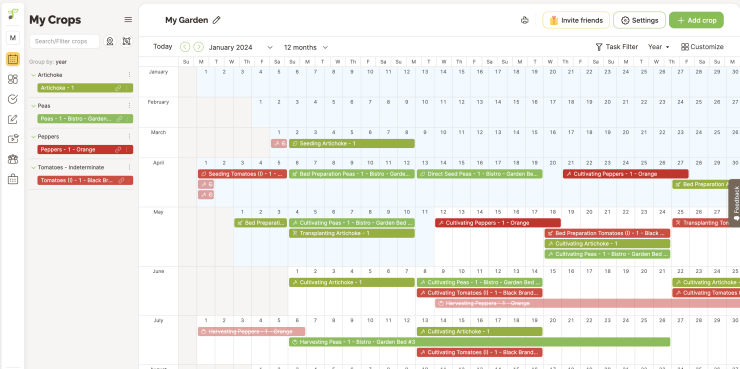
2. Smart Gardener
Smart Gardener starts strong by considering factors such as your family size, location, and frost dates. You can effortlessly add a wide array of plants, each with detailed information typically found on seed packets. The app generates a weekly task list for seed starting, transplanting, and outdoor planting. It even suggests the ideal number of seeds to plant per square foot. The app’s magic lies in its ability to arrange your garden virtually, considering plot size, companion planting, and other strategies. However, it’s unclear if it’s arranged based on size or companion planting and lacks a search function for plant varieties.
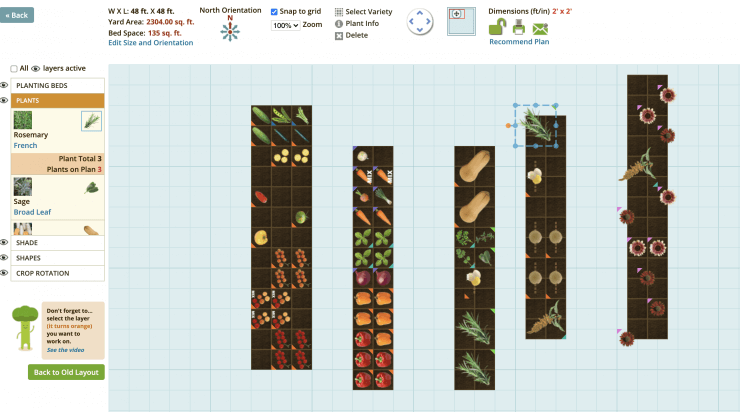
If you add something that’s not ideal for your growing climate, it will tell you but still allow you to add it to your garden. In the end, like magic, after you tell them how many of each you want, they put everything in place in your garden plots (virtually of course) based on the size of your plots, companion planting, and other strategies. You can move things around too, and lock items that you want to stay in a specific place. Overall, this app is totally useful, though I’ve used it a couple years and it doesn’t seem to have been improved in any ways.
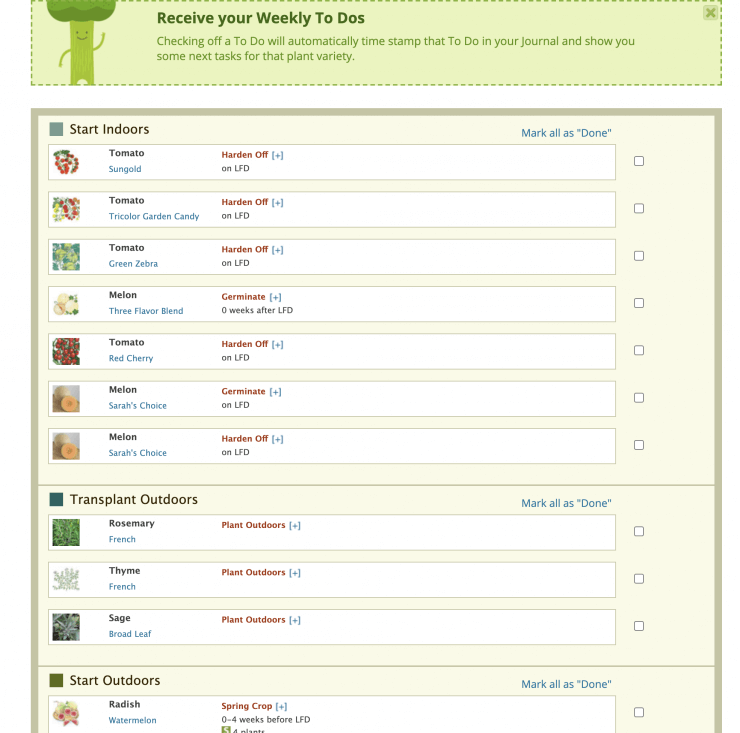
3. GrowVeg Garden Planner
The GrowVeg Garden Planner offers features akin to Smart Gardener but leans towards garden design without all the extras. The app also offers companion planting suggestions, enhancing your gardening experience. However, it falls short in providing information on specific plant varieties.
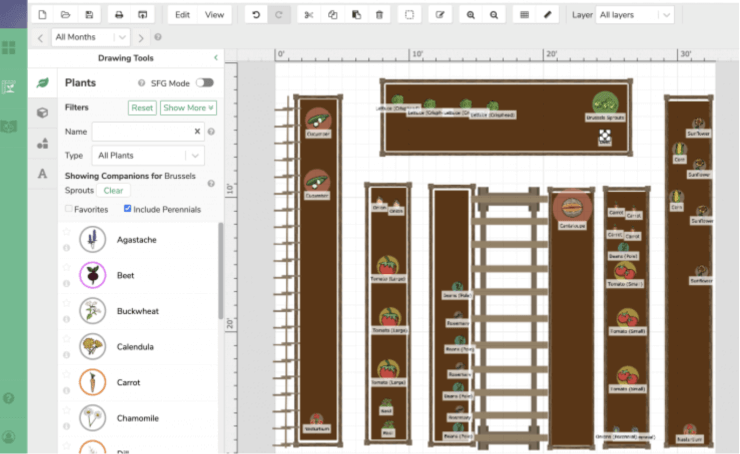
Then, like the other apps, you get a useful calendar of when to start seeds indoors, when to plant, and when to harvest. A bonus feature is the garden journal, where you can log what you’re doing or planning for your garden. Smart Gardener is a close comparison, but I prefer their app more because this app is still only offering broad planting advice on plants, not specific varietals. Meaning I can’t choose the exact type of tomato I am planting and get all the information for that specific tomato. That said, I like the guidance on companion planting much more than the text version and automated versions of companion planting suggestions you get from Smart Gardener, so it’s a close call.
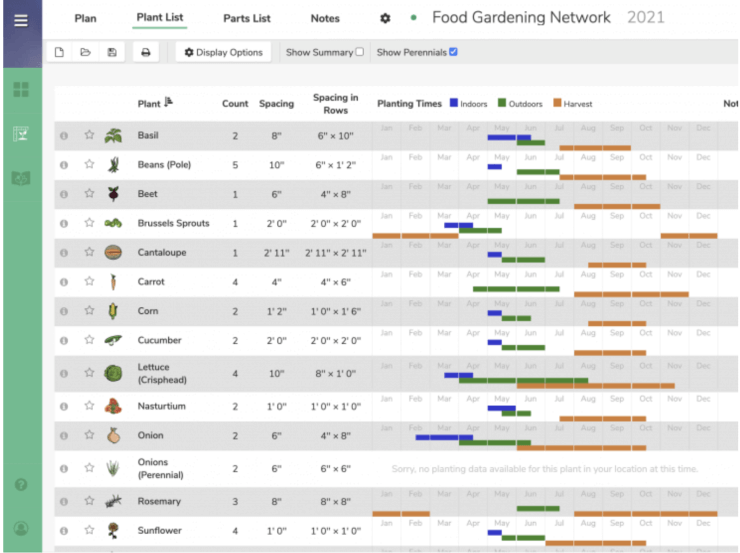
4. Planter
Planter joins the ranks of visual garden planning apps, allowing you to drag and drop vegetables onto your garden plot for a visual representation. It offers essential information such as plant spacing, depth, sun requirements, frost tolerance, and watering needs. However, it lacks specific planting schedules.
There are some pointers offered, for example, tomatoes take up four squares, whereas shallots take up one, so you know they need four times the space. When you click on the individual vegetable, you get planting information, but it’s general information, not specific to the exact type you’re planting like in the Smart Gardener App. It also doesn’t give you a schedule of planting, like the other apps in this list do, once you choose your vegetables.
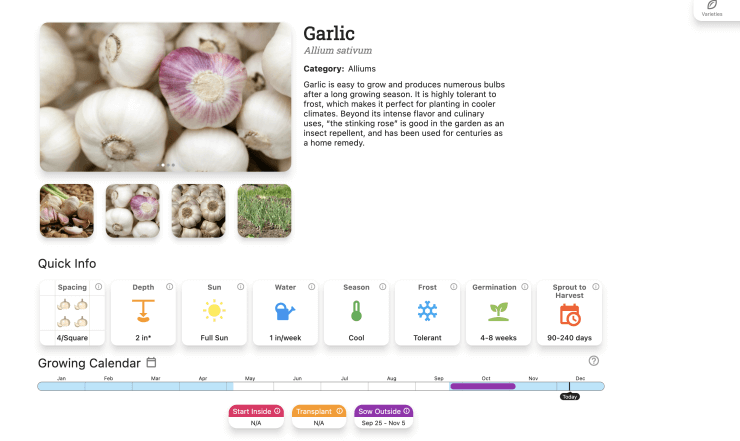
Still, comparable to Gardena, it’s suitable for the visual design of your garden with the bonus of information about each plant such as spacing, depth to plant, how much sun, frost-tolerance, watering, and harvesting.
Free Simple Tool: Gardener’s Supply Company Planning Tool
For a simple tool that’s free and will give you a brief summary of your garden, the Gardener’s Supply Company Planning Tool is all you need. Simply build your garden in their interface, which will automatically show you spacing for each plant, then click on “Summary” and you’ll get planting details for everything you selected. Easy peasy!

In conclusion, while each garden planning app has its merits, the choice ultimately depends on your specific gardening needs. For meticulous planning and customization, Seedtime is a great solution. On the other hand, if you prioritize garden layout and design, Smart Gardener, GrowVeg Garden Planner, and Planter offer a compelling options. Whichever app you choose, these modern solutions are sure to make your gardening experience more efficient and enjoyable. Happy gardening!


 Previous
Previous


I’m using a new app called Croppa (www.croppa.app). I wanted an app to be able to record what I’ve done and not just do planning, and so far Croppa has been amazing. You can record what you plant and where, and then it tracks the progress from seed to harvest in a birds eye view of the garden. You can also record notes, harvest, pictures etc. And it has zone specific growing information on over 1000+ varieties of vegetables, fruits and grains.